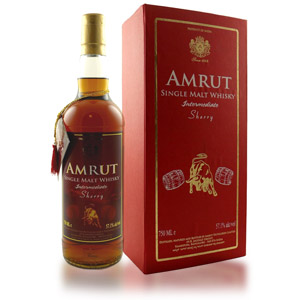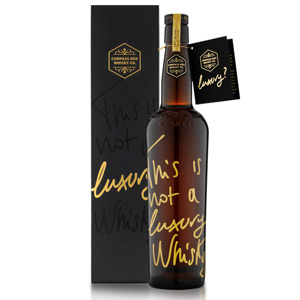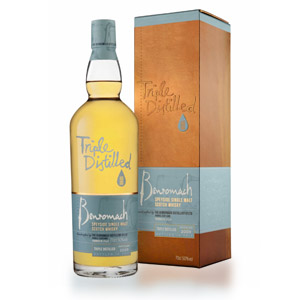This statement of whisky wisdom has started to circulate the blogs and forums in recent years. While true, it’s also the vaguest sort of unhelpful prose: “Older is not always better”. In short, this means that you can’t reliably use the age on the bottle as an indicator of quality. Since ratings-out-of-100 have met with a similar bashing, as has tried-and-true brand loyalty, it seems that the community of whisky writers and whisky scene opinion-makers has set out to steadfastly eliminate every possible predictor of quality and rule of thumb that exists to help the hapless whisky newbie who is confronted with the bursting shelves of the local whisky store. This goes hand-in-hand with the similar recent wisdom that “Blends aren’t all bad” and “Craft does not always mean quality”. Nowadays it’s only Kosher to say “Drink what you like” or “The best whisky is the one that tastes best to you.” This is great advice for the Brand Ambassador or Bartender who has the freedom to sample a bit of everything in order to determine what aligns with his or his personal taste compass, but is the bane of the average newbie. You can’t go by brand name, price point, professional rating, age statement, production size, or even plurality of grains. You must go blind, or trust blindly in the likes of me and the rest of my blogospherians, when laying your hard-earned scratch down for a bottle of brown, untasted.
I have good news and bad news for you. The bad news is that the statement “Older is not always better” has proven true in my own experience. Sorry. The good news is that you can take it with a grain of salt, because it largely applies to two isolated areas of the marketplace: No-age-statement bottlings, and bottlings above the age of 18. In my experience, most scotch in between can be more-or-less reliably ranked by age, with a few trivial exceptions, at least for the purpose of making an informed purchase.
No-age-statement bottlings are a two-edged sword. They allow hard-pressed whisky producers to meet demand by mixing some perfectly fine younger-than-10-year-old scotch into the standard lineup, and also give brand blenders the freedom of expression to create such masterpieces as Ardbeg Corryvreckan and Aberlour A’Bunadh, both of which contain some young stock for vibrancy and punch to great effect. The other edge of that particular blade is that it gives unscrupulous brand owners the freedom to “water down” pricier aged whisky with “not quite ready yet” barrels of younger stuff and hide the doctoring behind a fancy Gaelic name. The sorting out of one group from the other can be done only by experienced palates, and must be expressed in “take it by faith” online reviews. Solution? Only buy a non-age-statement bottling if you’ve enjoyed it before or have a review from someone you trust that recommends it.
The same advice holds true at the other end of the spectrum. The barrel aging of whisky, like the bottle aging of wine, goes through a quality curve. Somewhere around the age of three (depending on climate and wood quality), the spirit begins to take on enough character from the barrel that it begins to taste more like whisky and less like dirty vodka. As time passes and the magic of oak does its work, the whisky becomes better and better, gaining more concentrated oak extractives and continuing to mellow and disperse the harsh flavors of new make. At some point, usually between the ages of 20 and 40 depending on wood quality and wood re-use, the wood begins to overpower the whisky, inundating it with bitter tannins or “overcooked” flavors. Also, fragile organic compounds that contribute to the nuance of malt whisky eventually disperse entirely, rendering a spirit that is both “over-oaked” and bland. Ideally, every barrel will be tasted until it reaches the peak of this quality curve and will be sold or blended at its highest level of quality. It should be no surprise that this is not always the case.
Barrels can age too long for many reasons. Some get “lost” in a busy, crowded warehouse. Others are sold young to independent bottlers who through negligence, inexperience, thrift, or as a casualty of business failures, age them past the point of no return. Other barrels might be experimental (at some point you have to give up on that alligator-charred-stave reconstruction of a barrel recovered from the shipwreck of the HMS Admiral Gardner) or an attempt to repair whisky damaged by bad wood. These barrels can be sold on the cheap to blenders, passed off as innovative single-barrel expressions on the single-malt market, or held on to until their age qualifies them as investment pieces rather than pleasurable beverages. No doubt there are a good many diamond-crusted, gold-inlaid, mahogany-and-ebony boxes that cradle 50 year-old whisky far past the point of drinkability.
The solution to avoiding these travesties is the same as the protective measures for non-age-statement whisky: Don’t buy whisky aged over 18 years unless you’ve enjoyed it before, or have a trusted recommendation. The same applies, incidentally, to independent bottlings of any age which are marked with “too good to be true” low prices.
I said that I knew the above to be true based on my own experiences. My first “old” whisky was a 35 year-old Macallan by Gordon & MacPhail, a generally well-reputed independent bottler. It happened to be the cheapest whisky above the age of 30 on a swanky bar menu in Boston, at the whopping price of $40 a glass. I split it with a friend. It was decent whisky, certainly, but it wasn’t better than the 18 year-old Macallan I’d had the night before. It tasted mostly of old blankets and the crusty remains of dried-up red wine. Later that year, I tasted a 30 ml sample of 21 year-old Rosebank (1990 – 2011), a closed distillery from the Lowlands. It was floral and fragrant (like Glenlivet 21), but thin, bland, and hot on the palate. This probably came from one of that last-remaining bottom-of-the-barrel (hah!) leftovers from Rosebank’s stock after it closed. Its rarity made it expensive, but it was truly inferior whisky. Very recently, I had an opportunity to fill a glass from a bottle of Bruichladdich 1985 DNA, containing some of the last of Bruichladdich’s old distillery stock (in ex-bourbon and ex-sherry), and marked at around $600 a bottle. It was the most anticipated dram of the tasting, and later universally seen as the least enjoyable. 27 year-old Islay malt aged in ex-sherry shouldn’t be bland, but it was. Had I tasted it blind, I would have estimated it at $50 a bottle.
Before you comment below, I should disclaim that there are exceptions to every rule of thumb. Talisker 10 is far more mature than its age implies, for example, as is every product from Lost Spirits. There is plenty of excellent old-and-expensive malt, too, but my advice stands. Don’t spend that kind of money unless you know what you’re getting. I should also mention that the maturation of whisky is dependent on many variables, and climate is a huge one. Whisky aged in India, Kentucky, or California is liable to be mature much younger than 10 years of age, and consequently over-oaked much earlier than 30. Bourbon, too, is aged in new barrels which mature whisky faster than the “preowned” variety favored in Scotland.






Scotchnoob, I have been into whiskey for about a year and have probably seriously tasted (as in taken down notes and thought carefully about what I was doing) almost fifty scotches, so I’m more than a novice, but less than an expert. Nevertheless, I find that there are a lot of pieces of conventional wisdom floating around out there that I find myself unable to buy into, and I’m wondering about the degree to which this is a matter of my inexperience of my own personal taste. Here is what I have noticed:
– I can’t bring myself to care all that much about the size or industrial nature of the distillery. I know most people prefer small “craft” distilleries, but I just haven’t been able to see any relationship between how high tech, industrial, or large a distillery is and how much I like the whisky. I can see the appeal of wanting to support tradition and variety, but am I failing to notice some inverse relationship between industrial scale and quality of whisky?
– I can’t share the whisky community’s dislike of chill filtration. Since I’ve never tasted a chill filtered and unfiltered version of the same whisky, I can’t say whether the process eliminates desirable flavors, undesirable flavors, or doesn’t change anything I would notice. Again, I haven’t noticed any relationship between how much I enjoy a whisky and whether it’s chill filtered. The only objection I can muster to the practice is that it sounds expensive and adds to the production costs in ways that are passed on to me as the consumer.
– I don’t care about E150A. Again, I haven’t noticed a relationship between whether this chemical is added and my enjoyment of the whiskey. From what I understand, it’s added in such small quantities that most people can’t tell it’s there. As with distilleries being “craft” I can see the desire not to subject whisky to unnecessary processing, but I can’t see this factor influencing my purchase decisions.
On the other hand, some pieces of conventional wisdom I have found hold water for me:
– Older tends to be better. I’ve never had a whisky where I preferred the younger over the older version. I know they’re out there, I just haven’t run into that yet.
– I like single malts far more than blends. I have found my attempts to dive into and appreciate blends for any complexity to result in a crash in the shallow end of the pool. I have found blends nice for mixing or enjoying in social situations where I’m not paying much attention to what I’m drinking. But I have found even 18 year old Chivas Regal to be less complex and interesting than single malts half the price.
– Typical descriptions of the differences between bourbon and sherry casks match up exactly with my experiences and I find that I share the conventional preference for sherry casks (as far as I can tell, people preferring sherry cask flavors outnumber those who prefer bourbon cask flavors). This was one of the first things I noticed about single malts and it should be readily apparent even to someone who hasn’t had much whiskey before.
Do you find yourself disagreeing strongly with these sentiments. Is there an area where you feel you disagree with conventional wisdom?
Wow, Eric, that’s quite a lengthy comment. I’ve typed up some responses and made a new post, since the comments section can get pretty narrow: //scotchnoob.com/2013/08/29/reader-questions/
First, what a fantastic website you have! I’ve found so much insightful information while doing research for the next bottle to add to my collection and based on your ratings, it looks like we have a very similar palate. I too refuse to “take it too far” so thanks for sharing your experiences.
Out of curiosity, was the bar you went to in Boston called The Top of the Hub? That’s where I discovered in my younger years that whisky could be a “luxury”.
Thanks for the kind words, Vinh! I was at a hotel bar, but I honestly can’t remember the name (my friends were staying there). Cheers!